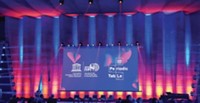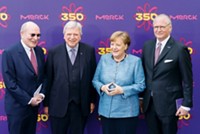Advertisement
Grab your lab coat. Let's get started
Welcome!
Welcome!
Create an account below to get 6 C&EN articles per month, receive newsletters and more - all free.
It seems this is your first time logging in online. Please enter the following information to continue.
As an ACS member you automatically get access to this site. All we need is few more details to create your reading experience.
Not you? Sign in with a different account.
Not you? Sign in with a different account.
ERROR 1
ERROR 1
ERROR 2
ERROR 2
ERROR 2
ERROR 2
ERROR 2
Password and Confirm password must match.
If you have an ACS member number, please enter it here so we can link this account to your membership. (optional)
ERROR 2
ACS values your privacy. By submitting your information, you are gaining access to C&EN and subscribing to our weekly newsletter. We use the information you provide to make your reading experience better, and we will never sell your data to third party members.
Environment
International Year Of Crystallography Launched
Science Anniversaries: Party in Paris begins yearlong celebration of this technique for probing molecular structure
by Sarah Everts
January 23, 2014
| A version of this story appeared in
Volume 92, Issue 4

In 1914, Max von Laue won the Nobel Prize in Physics for discovering that crystals could diffract X-rays, a finding that helped revolutionize our ability to visualize matter at the atomic scale.
In honor of this centennial, the United Nations Educational, Scientific & Cultural Organization (UNESCO) has declared 2014 the International Year of Crystallography (IYCr).
We are celebrating “100 years of groundbreaking discoveries” in crystallography, said Ban Ki-Moon, secretary-general of the UN, in a video webcast of IYCr’s opening ceremonies in Paris on Jan. 20–21.
“Humans have always been fascinated by crystals,” said Irina Bokova, director-general of UNESCO. For example, ancient Indian literature on mineralogy has been dated to 1100 B.C. “Not only do [crystals] add beauty to this world, they shape it and help us understand it,” Bokova said.
From the giant gemstones found in caves to the crystals that are found in artist pigments, in martian rock formations, and on the lab benches of pharmaceutical scientists, “there is no branch of structural science that is untouched by crystallography,” said Gautam R. Desiraju, president of the International Union of Crystallography. According to IUCr, a total of 29 Nobel Prizes have been awarded for work related to crystallography. These range from the discovery of X-rays by Wilhelm Röntgen at the turn of the last century to more recent awards for quasicrystals and structures of the ribosome and G protein-coupled receptors.
Bokova quoted Dorothy Crowfoot Hodgkin, who won the 1964 Nobel Prize in Chemistry for her use of X-ray crystallography to determine the structure of biological molecules such as vitamin B-12, as having said, “I was captured for life by chemistry and crystals.”
“The International Year of Crystallography is an opportunity to share this passion and to share it around the world,” Bokova added.
To celebrate crystallography, plans are afoot to set up crystal-growing programs for kids, crystallography laboratories in 20 countries worldwide that will be open to the public, and summit meetings for policymakers, Desiraju said. A new open-access publication, IUCrJ, was also launched in January as part of the festivities.





Join the conversation
Contact the reporter
Submit a Letter to the Editor for publication
Engage with us on Twitter